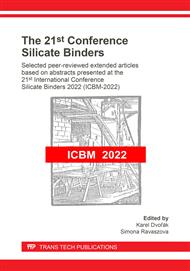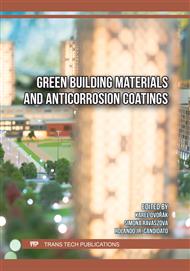[1]
H. Bergna, W. Roberts, Colloidal Silica: Fundamentals and Applications, Taylor & Francis Group, Boca Raton, 2006, ISBN 978-0-8247-0967-9.
Google Scholar
[2]
J. Q. Xiong, Y. T.Peng, D. Y. Xie, X. S. Mao, The Characteristics of Silica-Sol Combining Refractories, Advanced Materials Research, 396–398 (2011) 288–291.
DOI: 10.4028/www.scientific.net/amr.396-398.288
Google Scholar
[3]
E. Liden, S. Karlsson, B. Tokarz, Silica sols as refractory fibre binders, Journal of The European Ceramic Society, 21 (2001) 795-808.
DOI: 10.1016/s0955-2219(00)00271-5
Google Scholar
[4]
R. K. Iler, The chemistry of silica: Solubility, Polymerization, Colloid and Surface Properties and Biochemistry of Silica, Wiley-Interscience, New York, 1979, ISBN 978-0471024040.
Google Scholar
[5]
I. L. Thomas, K. H. McCorkle, Theory of Oriented Flocculation, Colloid Interface Sci., 36 (1971) 110-118.
DOI: 10.1016/0021-9797(71)90246-3
Google Scholar
[6]
N. Hamedani, H. Sarpoolaky, A.R. Souri, Microstructure and properties of colloidal silica bonded magnesite castable refractories, Iranian Journal of Material Science and Engineering, 8 (1) (2011) 25-31.
Google Scholar
[7]
M. Nouri-Khezrabad, M. A. L. Braulio, V. C. Pandolfelli, F. Golestani-Fard, H. R. Rezaie,. Nano–Bonded Refractory Castables, Ceramics International, 39 (2013) 3479–3497.
DOI: 10.1016/j.ceramint.2012.11.028
Google Scholar
[8]
A. Kr. Singh, Study on the effect of different sols on high alumina castable refractory, (2017) Dissertation, Department of Ceramic Engineering, National Institute of Technology, Rourkela, Odisha, India
Google Scholar
[9]
M.R. Ismael, R. D. dos Anjos, R. Salomao, V. C. Pandolfelli, Colloidal silica as a nanostructured binder for refractory castables, Refractories Applications and News, 11 (2015) 16-20.
Google Scholar
[10]
R.D. dos Anjos, M.R. Ismael, R. Salomao, V.C. Pandolfelli, Rheometric techniques applied to refractory ceramic suspensions, Refractories Applications and News, 11 (2006) 8-13.
Google Scholar
[11]
S.H. Badiee, S. Otroj, Non-cement refractory castables containing nano-silica: performance, microstructure, properties, Ceramics-Silikaty, 53 (2009) 297-302.
Google Scholar
[12]
M. Zielecka, E. Bujnowska, K. Suwala, M. Wenda,. Sol-Gel-Derived Silicon-Containing Hybrids, Recent Applications in Sol-Gel Synthesis, InTech (2017).
DOI: 10.5772/67824
Google Scholar



